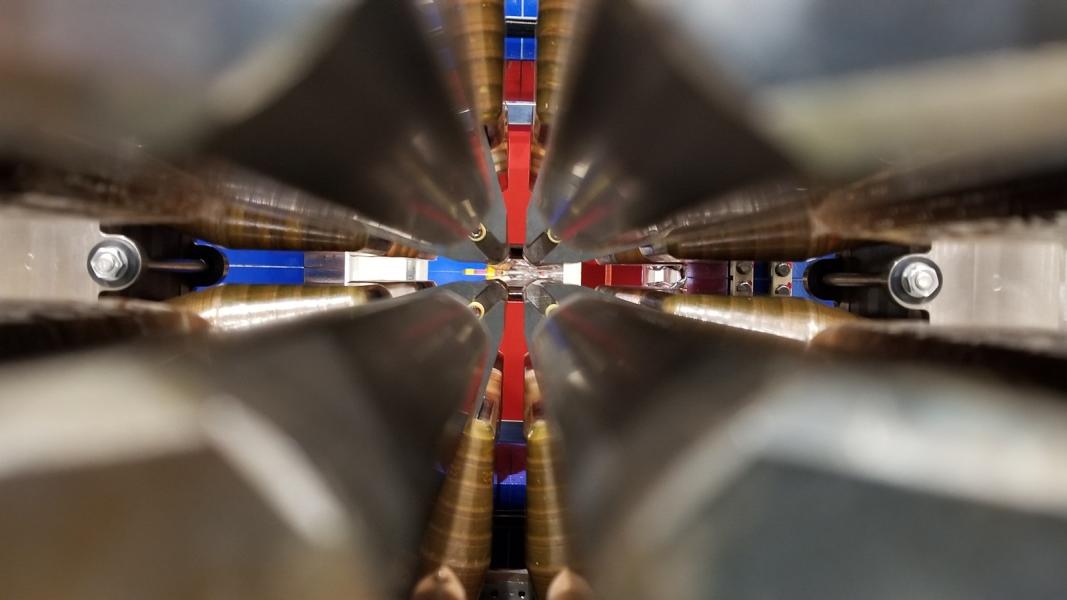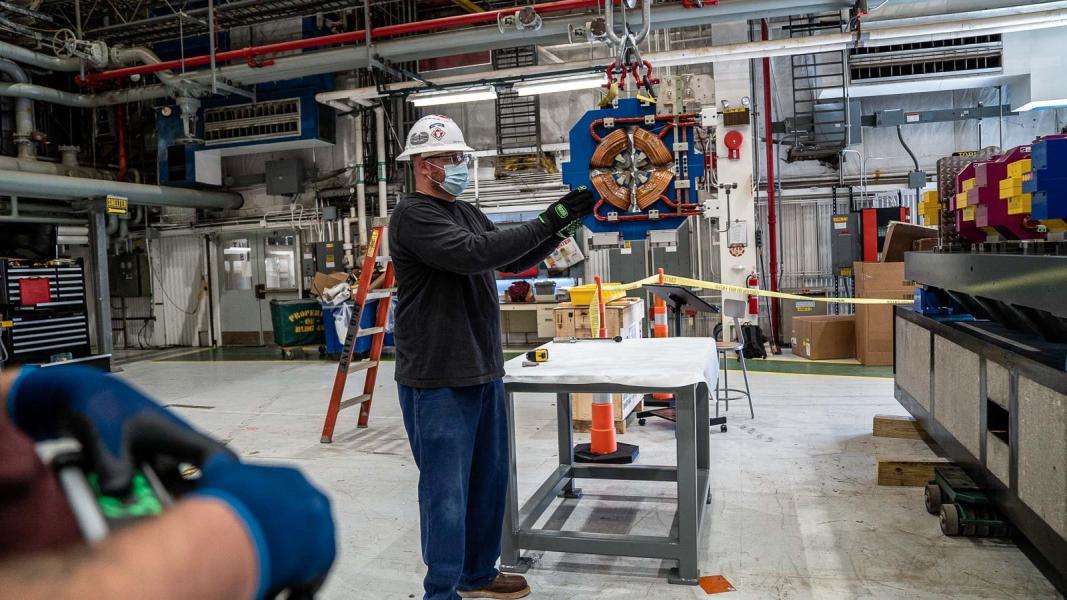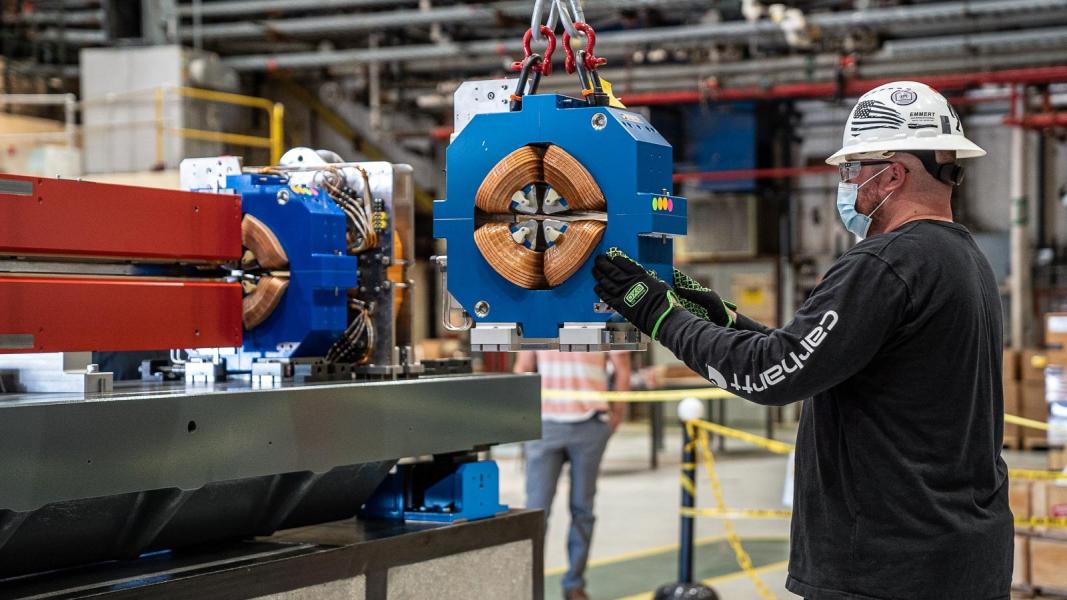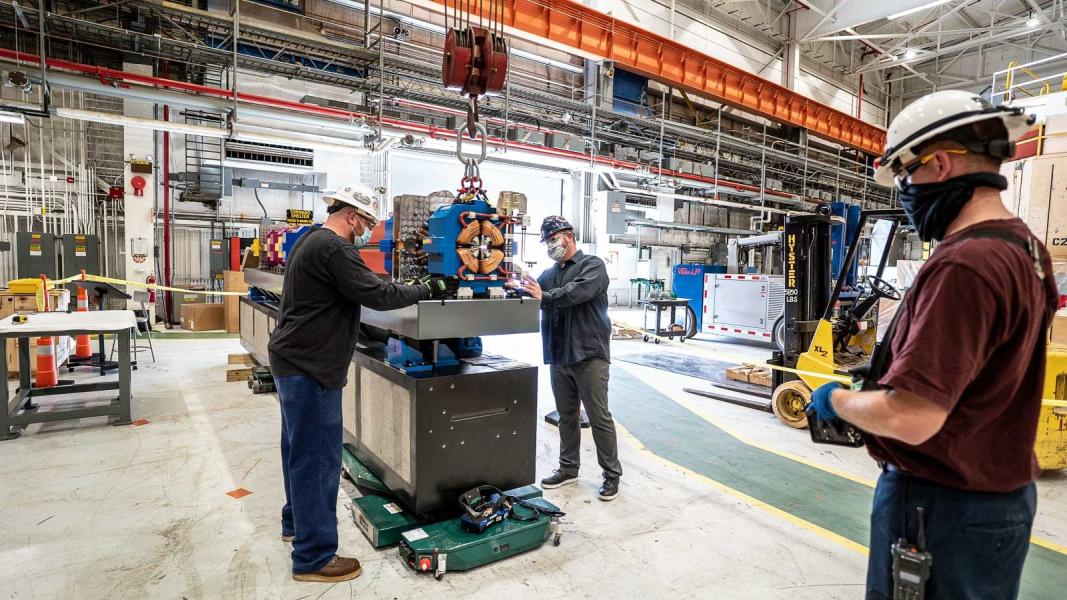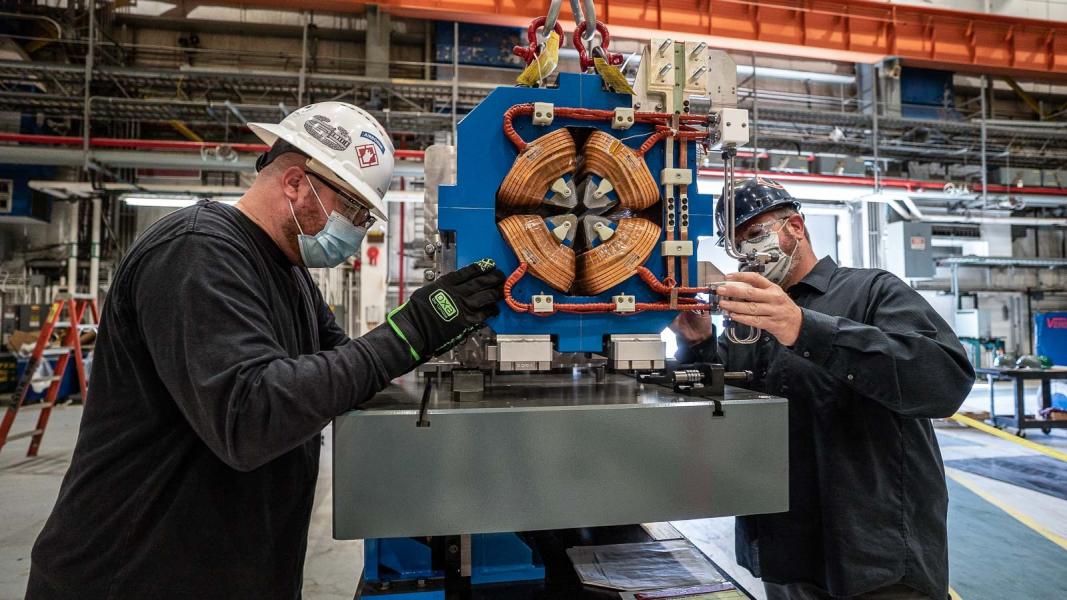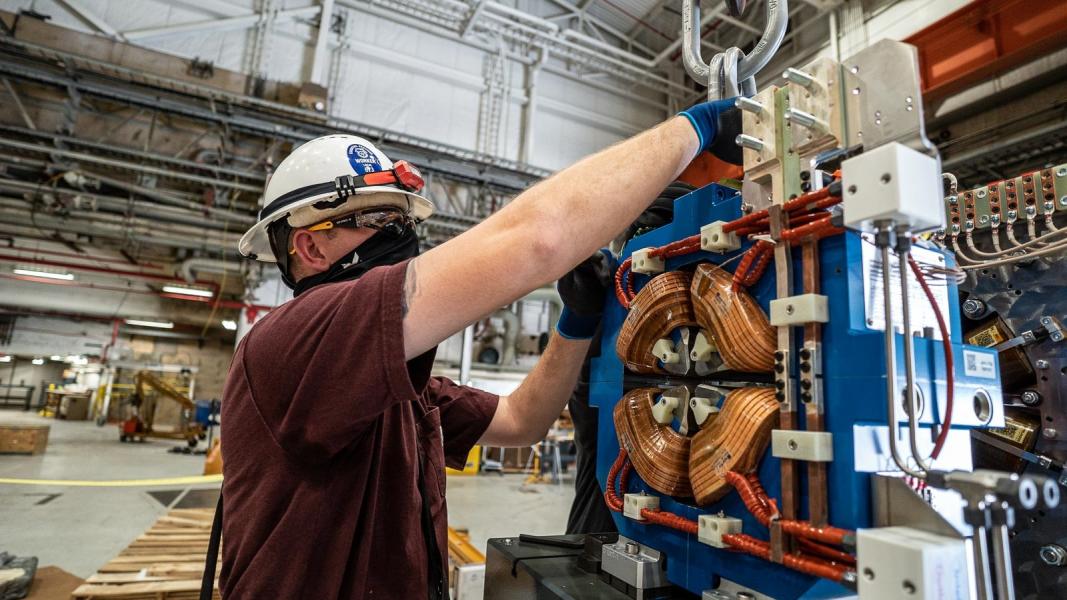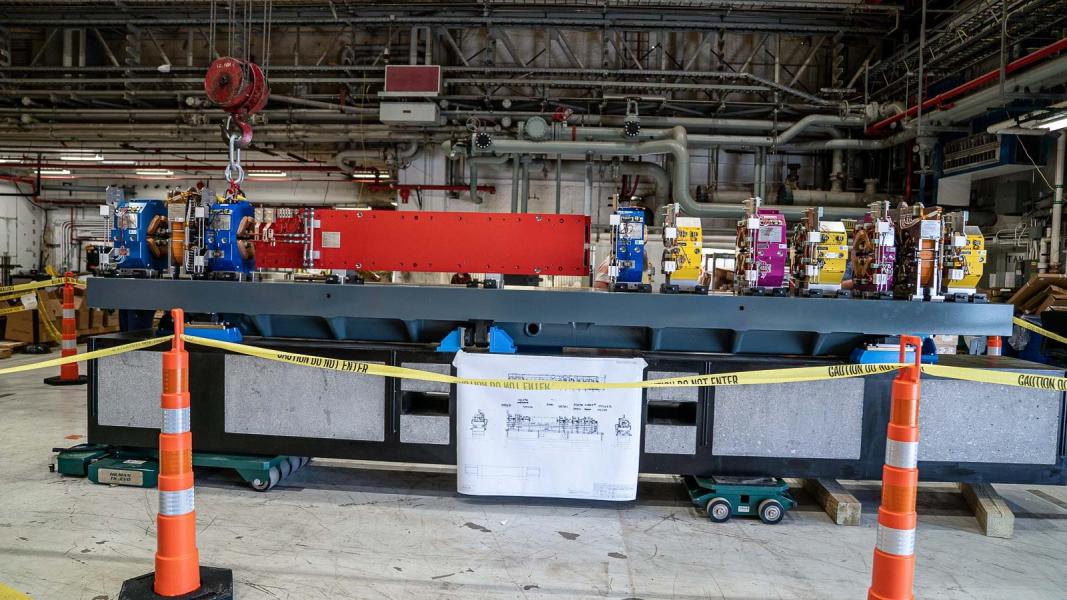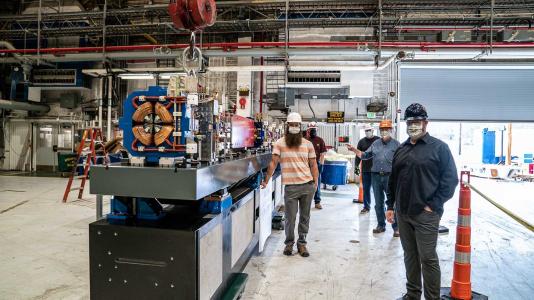
If you ever built a complex model out of LEGOs, you know the value of assembling parts of that model in pieces before attaching them to the whole. That same strategy is being used to upgrade the electron storage ring at the heart of the Advanced Photon Source (APS), a U.S. Department of Energy Office of Science User Facility at Argonne National Laboratory.The APS Upgrade project recently achieved a significant milestone with the first practice assembly of a module of powerful magnets. Ultimately 200 modules similar to this one will make up the new storage ring. A team of engineers and riggers used heavy cranes to lift magnets, some weighing thousands of pounds, and connect them to a cast iron girder and concrete plinth to form a module. This module will be disassembled and reassembled several times over the coming weeks to ensure that the process is as smooth as possible.
The new storage ring will include 1,321 powerful magnets, some the size of a dorm room fridge but weighing as much as an SUV. There are 15 different types of magnets included in the upgrade, all working together to steer and focus a beam of electrons as it circulates around the existing APS tunnel, which spans more than two-thirds of a mile in circumference. These electrons are used to create X-rays for more than 60 beamlines around the ring, and with the new magnets focusing those electrons into a tight beam, the X-rays will be up to 500 times brighter than those currently used at the APS.
Each of those magnets, once it arrives at Argonne, must be tested to ensure that its magnetic field meets the stringent requirements for the upgrade. Then the magnets will be mounted onto plinth assemblies, and each magnet must precisely align with its neighbors. The allowable misalignment is 30 microns, about half the width of a human hair. The completed modules will sit on transporter systems that will be used to slowly move the modules from the loading dock onto the storage ring tunnel by remote control.
“Each one of these large magnet assemblies forms a module and there are five modules to a sector,” explained Jeremy Nudell, the mechanical engineering specialist in charge of storage ring pre-installation assembly. “There are 40 sectors around the ring, and we will assemble each sector one module at a time.”
Nudell noted that this practice assembly doesn’t include the vacuum system, which will surround the electron beam with an airtight pipe, keeping the beam from dissipating due to interaction with the atmosphere. Once the vacuum system has been manufactured, the upgrade team will add it to the assembly process.
“Over the next six months we will finalize our procedure to mount and align these magnets, and as the vacuum systems arrive, we will finalize those procedures as well,” Nudell said.
About the Advanced Photon Source
The U. S. Department of Energy Office of Science’s Advanced Photon Source (APS) at Argonne National Laboratory is one of the world’s most productive X-ray light source facilities. The APS provides high-brightness X-ray beams to a diverse community of researchers in materials science, chemistry, condensed matter physics, the life and environmental sciences, and applied research. These X-rays are ideally suited for explorations of materials and biological structures; elemental distribution; chemical, magnetic, electronic states; and a wide range of technologically important engineering systems from batteries to fuel injector sprays, all of which are the foundations of our nation’s economic, technological, and physical well-being. Each year, more than 5,000 researchers use the APS to produce over 2,000 publications detailing impactful discoveries, and solve more vital biological protein structures than users of any other X-ray light source research facility. APS scientists and engineers innovate technology that is at the heart of advancing accelerator and light-source operations. This includes the insertion devices that produce extreme-brightness X-rays prized by researchers, lenses that focus the X-rays down to a few nanometers, instrumentation that maximizes the way the X-rays interact with samples being studied, and software that gathers and manages the massive quantity of data resulting from discovery research at the APS.
This research used resources of the Advanced Photon Source, a U.S. DOE Office of Science User Facility operated for the DOE Office of Science by Argonne National Laboratory under Contract No. DE-AC02-06CH11357.
Argonne National Laboratory seeks solutions to pressing national problems in science and technology. The nation’s first national laboratory, Argonne conducts leading-edge basic and applied scientific research in virtually every scientific discipline. Argonne researchers work closely with researchers from hundreds of companies, universities, and federal, state and municipal agencies to help them solve their specific problems, advance America’s scientific leadership and prepare the nation for a better future. With employees from more than 60 nations, Argonne is managed by UChicago Argonne, LLC for the U.S. Department of Energy’s Office of Science.
The U.S. Department of Energy’s Office of Science is the single largest supporter of basic research in the physical sciences in the United States and is working to address some of the most pressing challenges of our time. For more information, visit https://energy.gov/science.
